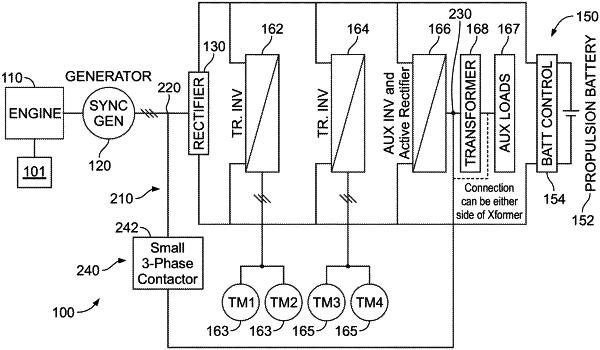| CPC B60L 53/24 (2019.02) [B60K 6/28 (2013.01); B60L 50/60 (2019.02); B60L 58/19 (2019.02); B60Y 2300/91 (2013.01); B60Y 2400/112 (2013.01); B60Y 2400/204 (2013.01)] | 20 Claims |

|
14. A propulsion circuit for a vehicle having an engine comprising:
a generator configured to be coupled to the engine, and configured to receive an input from the engine, and to provide an alternating current (AC) output;
a power rectifier configured to receive the AC output from the generator and provide a direct current (DC) output responsive to receiving the AC output from the generator;
a DC bus coupled to the rectifier;
a propulsion battery system coupled to the DC bus; the propulsion battery system including a battery controller and plural battery units, the battery controller configured to switch between a first configuration and a second configuration, wherein at least of some of the battery units are connected in parallel in the second configuration; and
at least one converter configured to convert a received direct current to a produced alternating current, the at least one converter coupled to the DC bus, wherein the at least one converter is also configured to convert a received alternating current to a produced direct current and provide the produced direct current to the propulsion battery system;
wherein the propulsion circuit is configured to selectably provide a charge to the battery system via the at least one converter by re-directing at least a portion of the AC output from the generator to the at least one converter without passing through the power rectifier.
|